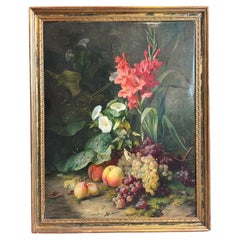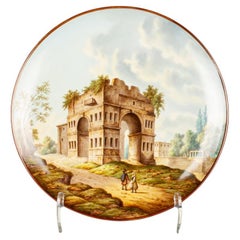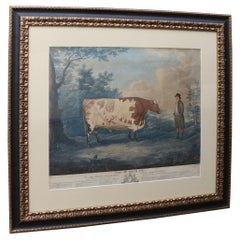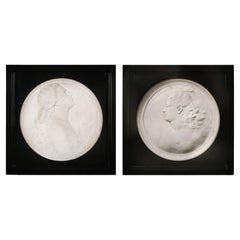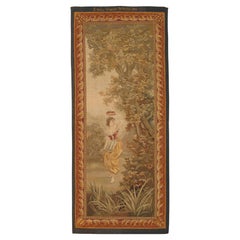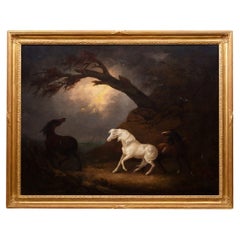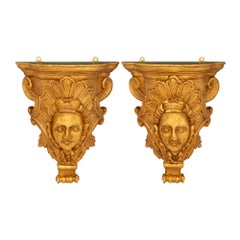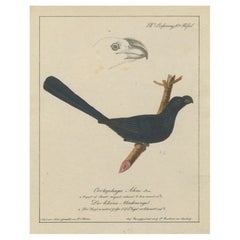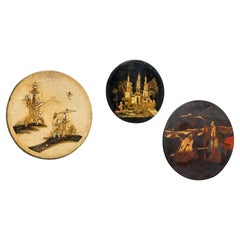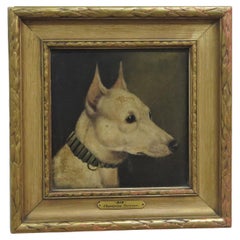19th Century Wall Decorations
Russian Late Victorian Antique 19th Century Wall Decorations
Wood
English Aesthetic Movement Antique 19th Century Wall Decorations
Paint
Italian Louis XVI Antique 19th Century Wall Decorations
Giltwood
Antique 19th Century Wall Decorations
Paper
Antique 19th Century Wall Decorations
Wood
English Antique 19th Century Wall Decorations
Wood, Giltwood
Unknown Louis XVI Antique 19th Century Wall Decorations
Giltwood
Antique 19th Century Wall Decorations
Plaster
French Belle Époque Antique 19th Century Wall Decorations
Terracotta, Paint
English Neoclassical Antique 19th Century Wall Decorations
Canvas, Giltwood, Paint
Italian Grand Tour Antique 19th Century Wall Decorations
Paint
English Antique 19th Century Wall Decorations
Glass
Italian Neoclassical Antique 19th Century Wall Decorations
Canvas, Wood, Paint
English Antique 19th Century Wall Decorations
Paper
Italian Antique 19th Century Wall Decorations
Canvas
French Antique 19th Century Wall Decorations
Majolica
Dutch Napoleon III Antique 19th Century Wall Decorations
Oak
French Antique 19th Century Wall Decorations
Canvas
French Antique 19th Century Wall Decorations
Canvas, Giltwood, Paint
Italian Other Antique 19th Century Wall Decorations
Paper
French Neoclassical Antique 19th Century Wall Decorations
Bronze, Ormolu
French Louis XVI Antique 19th Century Wall Decorations
Canvas, Giltwood
Antique 19th Century Wall Decorations
Paper
Italian Louis XV Antique 19th Century Wall Decorations
Carrara Marble
Antique 19th Century Wall Decorations
Enamel
European Antique 19th Century Wall Decorations
Paint
Antique 19th Century Wall Decorations
Paper
Swiss Antique 19th Century Wall Decorations
Walnut
Unknown Antique 19th Century Wall Decorations
Canvas, Paint
Antique 19th Century Wall Decorations
Bronze
French Antique 19th Century Wall Decorations
Canvas, Giltwood
American Antique 19th Century Wall Decorations
Canvas
Antique 19th Century Wall Decorations
Other
Antique 19th Century Wall Decorations
Paper
Austrian Black Forest Antique 19th Century Wall Decorations
Antler, Walnut
Antique 19th Century Wall Decorations
Canvas, Walnut, Paint
Antique 19th Century Wall Decorations
Paper
French Antique 19th Century Wall Decorations
Wood, Paint
French Antique 19th Century Wall Decorations
Wool
French Antique 19th Century Wall Decorations
Acrylic
German Antique 19th Century Wall Decorations
Paint
English Antique 19th Century Wall Decorations
Wood, Paint
British Antique 19th Century Wall Decorations
Canvas, Giltwood
French Baroque Antique 19th Century Wall Decorations
Mirror, Wood
European Other Antique 19th Century Wall Decorations
Giltwood
French Neoclassical Antique 19th Century Wall Decorations
Canvas
French Louis XVI Antique 19th Century Wall Decorations
Bronze
German Napoleon III Antique 19th Century Wall Decorations
Porcelain
Antique 19th Century Wall Decorations
Metal
English Folk Art Antique 19th Century Wall Decorations
Paper
French Neoclassical Antique 19th Century Wall Decorations
Wood, Paper
German Antique 19th Century Wall Decorations
Canvas
Antique 19th Century Wall Decorations
Giltwood
Italian Neoclassical Antique 19th Century Wall Decorations
Paper
English Folk Art Antique 19th Century Wall Decorations
Paper
French Gothic Revival Antique 19th Century Wall Decorations
Oak
Early Victorian Antique 19th Century Wall Decorations
Canvas
Burmese Antique 19th Century Wall Decorations
Metallic Thread
Read More
In Francks Deceus’s ‘Mumbo Jumbo #5,’ the Black Experience Is . . . Complicated
Despite the obstacles, the piece’s protagonist navigates the chaos without losing his humanity.
12 Floral-Accented Rooms with a Handmade, Folkloric Feel
Who needs a flower garden? Just use your imagination — and some beautifully patterned wallpaper or fabric — to bring the outdoors in.
This Wolf Kahn Pastel Is the Epitome of Beauty at Its Most Essential
A longtime admirer of Kahn’s work, 1stDibs editorial director Anthony Barzilay Freund explores why it’s relevant now more than ever.
Why Jules Chéret Was the King of the Modern Poster
The streets of fin-de-siècle Paris were set aglow with colorful poster ads, thanks to the printing techniques invented by Jules Chéret. Now, the Milwaukee Art Museum is celebrating this undersung talent in America's first solo show dedicated his exuberant works.
Anna Condo’s Multifaceted Career Spans Film, Photography and NFTs
From her historic Manhattan townhouse, the talented creator and curator of 1stDibs' latest NFT exhibition tells us about the art in her home and how she got involved with cryptoart.
How Keith Rivers Went from NFL Linebacker to Blue-Chip Art Aficionado
The former football player is as serious about becoming a great contemporary-art patron as he once was about making tackles. Here, Rivers tells us how he got the collecting bug and how his tastes have evolved over the years.
More Than Ever, the Female Design Council Is Embracing Funked-Up Creativity
The organization's "Womxn’s History Month" collection celebrates female-identified creators pushing the boundaries of technique and material.
This New Orleans Antiques Dealer’s Stylish Home Doubles as Her Art Studio
A former lawyer, Karina Gentinetta has achieved second-act success as a furniture gallerist and painter.
